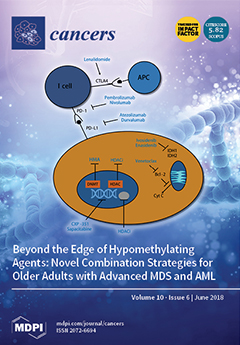The
hsa-mir-483 gene, located within the
IGF2 locus, transcribes for two mature microRNAs,
miR-483-5p and
miR-483-3p. This gene, whose regulation is mediated by the the CTNNB1/USF1 complex, shows an independent expression from its host gene
IGF2. The
miR-483-3p affects the Wnt/β-catenin,
[...] Read more.
The
hsa-mir-483 gene, located within the
IGF2 locus, transcribes for two mature microRNAs,
miR-483-5p and
miR-483-3p. This gene, whose regulation is mediated by the the CTNNB1/USF1 complex, shows an independent expression from its host gene
IGF2. The
miR-483-3p affects the Wnt/β-catenin, the TGF-β, and the TP53 signaling pathways by targeting several genes as
CTNNB1,
SMAD4,
IGF1, and
BBC3. Accordingly,
miR-483-3p is associated with various tissues specific physiological properties as insulin and melanin production, as well as with cellular physiological functions such as wounding, differentiation, proliferation, and survival. Deregulation of
miR-483-3p is observed in different types of cancer, and its overexpression can inhibit the pro-apoptotic pathway induced by the TP53 target effectors. As a result, the oncogenic characteristics of
miR-483-3p are linked to the effect of some of the most relevant cancer-related genes,
TP53 and
CTNNB1, as well as to one of the most important cancer hallmark: the aberrant glucose metabolism of tumor cells. In this review, we summarize the recent findings regarding the
miR-483-3p, to elucidate its functional role in physiological and pathological contexts, focusing overall on its involvement in cancer and in the TP53 pathway.
Full article






